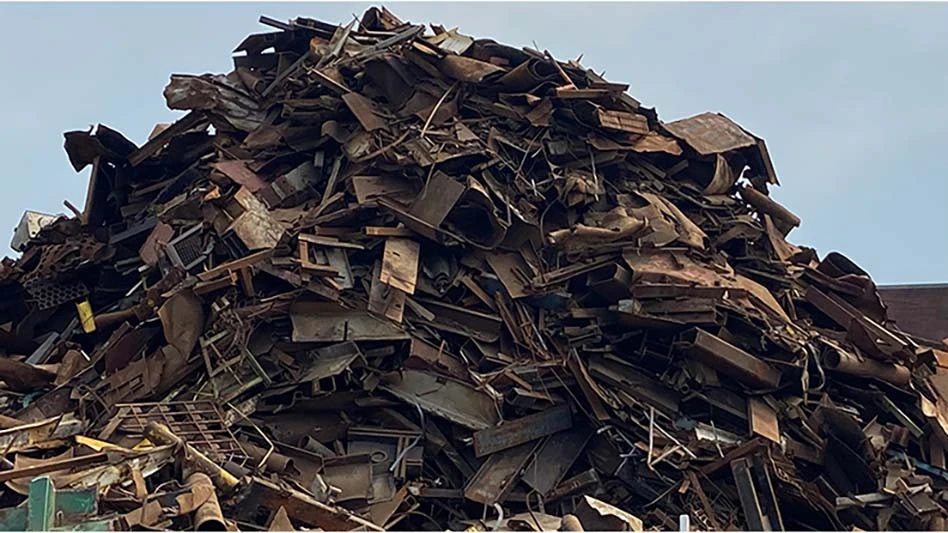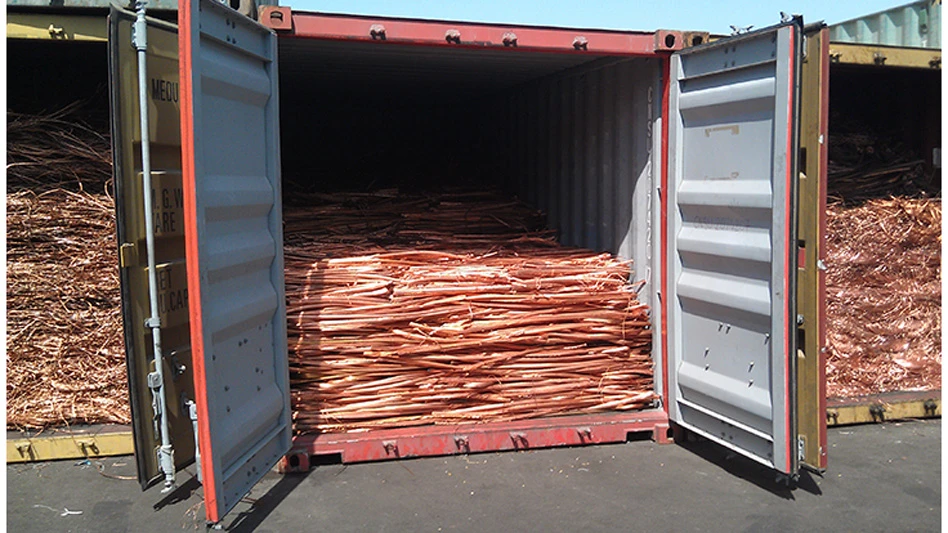
Photo provided by Wendt Corp.
The list of the world’s metals shredding plants maintained and updated by the Brussels-based Bureau of International Recycling (BIR) shows the processing method can be found throughout the world, as emerging economies now produce their own share of end-of-life vehicles and obsolete appliances.
The BIR and its Shredder Committee have identified shredders at work in 50 different nations in the 2020 version of its World Shredder List.
At the BIR Shredder Committee’s online meeting in early June, Shredder Committee Chair Scott Newell III of United States-based Newell Recycling Equipment LLC said some of the 1,158 shredding plants identified by the committee are currently idle because of the COVID-19 pandemic and resulting economic downturns.
The 2020 version of the list shows the United States remains in the lead position globally, with 322 known shredding plants. However, its lead may be short-lived, as the People’s Republic of China now has 317 shredders, and its shredder population is rising.
In 2018, Scott Newell III’s father Scott Newell Jr., chairman and CEO of Newell Recycling Equipment, said his company had installed or sold 19 auto shredding plants to scrap recyclers in China as of April 2018. Newell Jr., who also is vice-chair of Nantong City, China-based China Recycling Newell Equipment (Jiangsu) Co. Ltd., said one of his shredders installed in China can process up to 600 tons per hour.
At that time, the company also had orders for three large 11,000-horsepower (hp) shredders in China and had orders for “11 of our 6,000-hp machines, three of our 4,000-hp models and one of our 3,000-hp plants.”
While the scale of China’s shredding sector is hard to match, the nation’s recyclers are far from alone in adopting the shredding method. The BIR list shows there are now 16 shredding plants in Mexico, with United States-based Wendt Corp. having supplied one of those in 2017.
The Wendt Corp. Wendt Corp.’s modular M6090 model on the job for Roca Acero near Monterrey, Mexico, is emblematic of smaller units that are earning market share in nations with emerging economies and in North America and Europe.
Prior to installing its shredder, Roca Acero had been processing 75 percent industrial scrap and 25 percent what its CEO Rodolfo Camarillo Montemayor calls “mixed urban scrap,” most of which is obsolete material.
The addition of the 2,500-horsepower shredder and accompanying downstream system shredding plant helped the Mexican recycling firm change that percentage by allowing Roca Acero to handle a much wider range of obsolete scrap. That has been typical of why shredders have been considered a desirable processing option by recyclers around the world.
While nations like Mexico and China add shredding capacity, recyclers in developed nations continue to assess whether shredding makes sense at various recycling facilities.
In Japan’s Chiba prefecture, outside of Tokyo, Phoenix Metal Corp. operates a 3,500-horsepower Metso shredder to process ELVs and other scrap. The company’s two preshredders and its 80-inch Metso hammermill shredder process about 500 tons per day of ferrous and nonferrous scrap.
Regulations around the world, including in Japan, have prompted recyclers to consider ELV and appliance disassembly as either a predecessor or alternative to shredding.
Phoenix Metal also runs a large dismantling center not far from its shredding plant—not for ELVs, but rather for refrigerators, washing machines, air conditioners and other large appliances. The disassembly activity includes not only harvesting metals but also collecting fluids, identifying resellable motors and the shredding of some plastic parts.
The 2020 BIR figures seem to indicate the opportunities of shredding continue to outpace the challenges. In addition to the 322 shredding plants in the U.S. and 317 in China, the BIR shows 300 in Europe, 110 in Japan, 26 in Canada, 16 in Brazil (as in Mexico), and 12 in Australia. In Europe, Italy leads the way with 52 plants, followed by 45 in France and 39 each in Germany and the United Kingdom.
The list does not show any plants for India, although steelmakers, recyclers and the government in that nation all have indicated they intend to prioritize auto shredding as a recycling technique.
Recycling Today maintains its own auto shredding plant list for North America. Recyclers who operate or know of a plant in the U.S., Canada or Mexico are encouraged to make Recycling Today aware of it, and can do so via this online form.
Latest from Recycling Today
- BMW Group, Encory launch 'direct recycling’ of batteries
- Loom Carbon, RTI International partner to scale textile recycling technology
- Goodwill Industries of West Michigan, American Glass Mosaics partner to divert glass from landfill
- CARI forms federal advocacy partnership
- Monthly packaging papers shipments down in November
- STEEL Act aims to enhance trade enforcement to prevent dumping of steel in the US
- San Francisco schools introduce compostable lunch trays
- Aduro graduates from Shell GameChanger program





